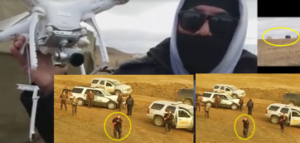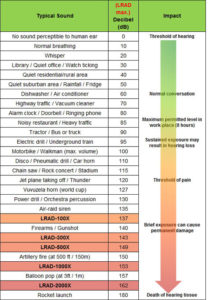Technologists love to talk tech. Many times we default to discussing the what: What does it do? How fast can it go? Sometimes we forget that technologies and technology skills do amazing things for people. As the mom of an autistic person, I’m grateful for tech that allows me to communicate when my child is non-verbal. I’m amazed at medical and communication advances that make all of our safer and easier.
As technologists, we’re are also proud of how the tech we work with makes the world a better place. But what about technology that is used for questionable practices? What happens when good tech is used to do bad things?
Technology skills should be used for good not bad
Right now, an historic resistance is happening near the Standing Rock Sioux Nation in North Dakota. The Tribe is opposing a pipeline (the Dakota Access Pipeline) that is being built by Energy Transfer Partners. As the legal process works its way through the courts, protesters have been using non-violent methods of resistance to stop work on the pipeline. The response from law enforcement has been swift, and has included some very interesting applications of technology.
Surveillance Drones
Drones are an amazing way to gather data from locations where humans are not be able to go. As with much of our modern technology (including the Internet), modern drone technology was originally created by the US military (specifically to target Osama bin Laden). Consumer drones began to be marketed around 2010, and the FAA believes there will be as many as 600,000 unmanned aircraft in use commercially in the next year.
In North Dakota, both sides of the Dakota Access Pipeline conflict have been using drones to gather information to help their cause. Drone use is causing escalations between law enforcement officials and the water protectors. Law enforcement shot down the protectors’ drones, saying they were endangering a helicopter. The next day, the FAA declared the entire area a no-fly zone, meaning only law enforcement could use the air space. The protectors objected, saying law enforcement is controlling the air space to suppress information.
The authorities have been using drones since the the action began in April to take surveillance on the people and activities in the camps. This, combined with analytics software designed for law enforcement to search social media sites like Facebook for suspects, makes for very powerful surveillance.
Drones are excellent example of how technology created for military reasons have been adapted for the use of the public. However, the law of unintended consequences must be considered here. What happens if the data collected with drones is used to discriminate or harass citizens? What happens if it is the government who is the perpetrator of the discrimination? The Electronic Frontier Foundation (EFF) has been warning (and litigating) about the US government’s use of surveillance drones and the rights of American citizens for several years. Since there isn’t much legislation protecting our rights today, can drone pilots be trusted to use this technology in a way that doesn’t infringe on others’ rights?
Sound weapons
In the Dakota Pipeline standoff, law enforcement is also using LRAD cannons. LRAD (long-range acoustic device) cannons are acoustic weapons and communication devices. This technology and technology skills are also a military invention. It was developed after the attack on the USS Cole in 2000 to prevent vessels from coming too close to US warships. It was intended to be a hailing device that captains could use to give instructions to a vessel while it was still far away.
Instead of having one diaphragm that vibrates to make sound, like a speaker does, LRADs have an array of piezoelectric transducers that change electrical impulses into sound. Piezoelectric material is a substance that is permanently polarized. Lots of transducers made of this material are put together, and their sound amplifies.
LRAD devices have very good non-military uses. Airports use them to keep birds away from airplanes as they take off and land. Also, LRADs are very good at making sound audible for long distances. However, these devices are also being used by law enforcement agencies to control large gatherings of citizens. When used in this way, the LRAD emits a piercing sound at higher levels than are safe for human ears. Sustained exposure at max power/audio hits 146 decibels. Short term exposure at 140 decibels can cause permanent damage.
It is unclear if there are any standards or even training for law enforcement who are using LRADs as a form of crowd control. Medics on the ground at Standing Rock confirmed internal bleeding of protectors who were in the path of the LRADs when they were deployed. While this fascinating military technology has some very important civilian applications, can the devices be used safely for crowd control?
These are just two examples
There are many more examples of compelling technology that is being used in a way that puts people in harm’s way. I believe that it is important to understand the impact, intended and unintended, that the applications and systems that we build and manage have on the world. This can be as simple considering how people will input race, gender, and marital statuses into the databases we create (even ways that may not normally come to mind). It can be as serious as gathering documentation to expose your own government’s covert actions, as Edward Snowden did.
Maybe a good starting place is just starting the discussion. We should be geeking out on the technologies and technology skills that are being used in questionable ways, just as we do on our favorite vendor software. Our technical expertise should be part of the discussion on these policing methods.
This is my way to start that discussion. So what do you have to say?



